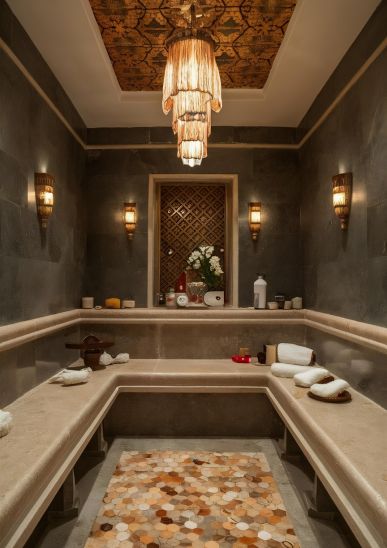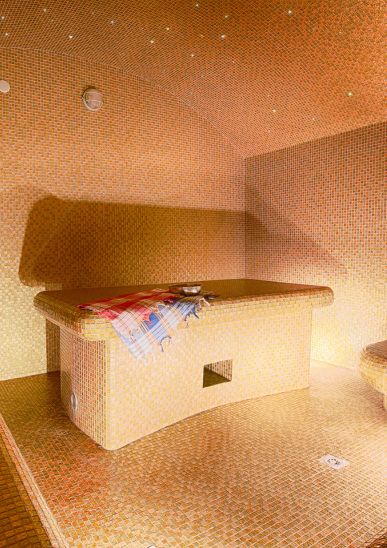
A Turkish bath, also known as a hammam, is a traditional bathing experience originating from Ottoman culture, combining cleansing, relaxation and wellness in a warm steam environment. It is distinguished by its focus on both physical and mental purification, and has influenced the creation of many modern spas and wellness centers.



The steam opens the pores and eliminates impurities, leaving the skin smoother, cleaner and more luminous.

Sweating eliminates accumulated toxins, helping to purify the body naturally.

The increase in body temperature stimulates the body's defenses, helping to prevent diseases.




It uses moist steam instead of dry heat. Temperature generally varies between 40 °C and 50 °C, with humidity levels close to 100%.

Traditional Turk baths consist of several rooms with gradually increasing temperatures, allowing the body to adapt.

They are usually constructed of marble or tile, which is not only durable, but also retains heat and facilitates cleaning.

In the center, there are surfaces where users can lie down to receive massages or traditional exfoliations.

Many of the rooms have fountains or buckets of cold water to cool off after the heat.

Its design often includes domes to promote the circulation of steam, creating an intimate and relaxing space.